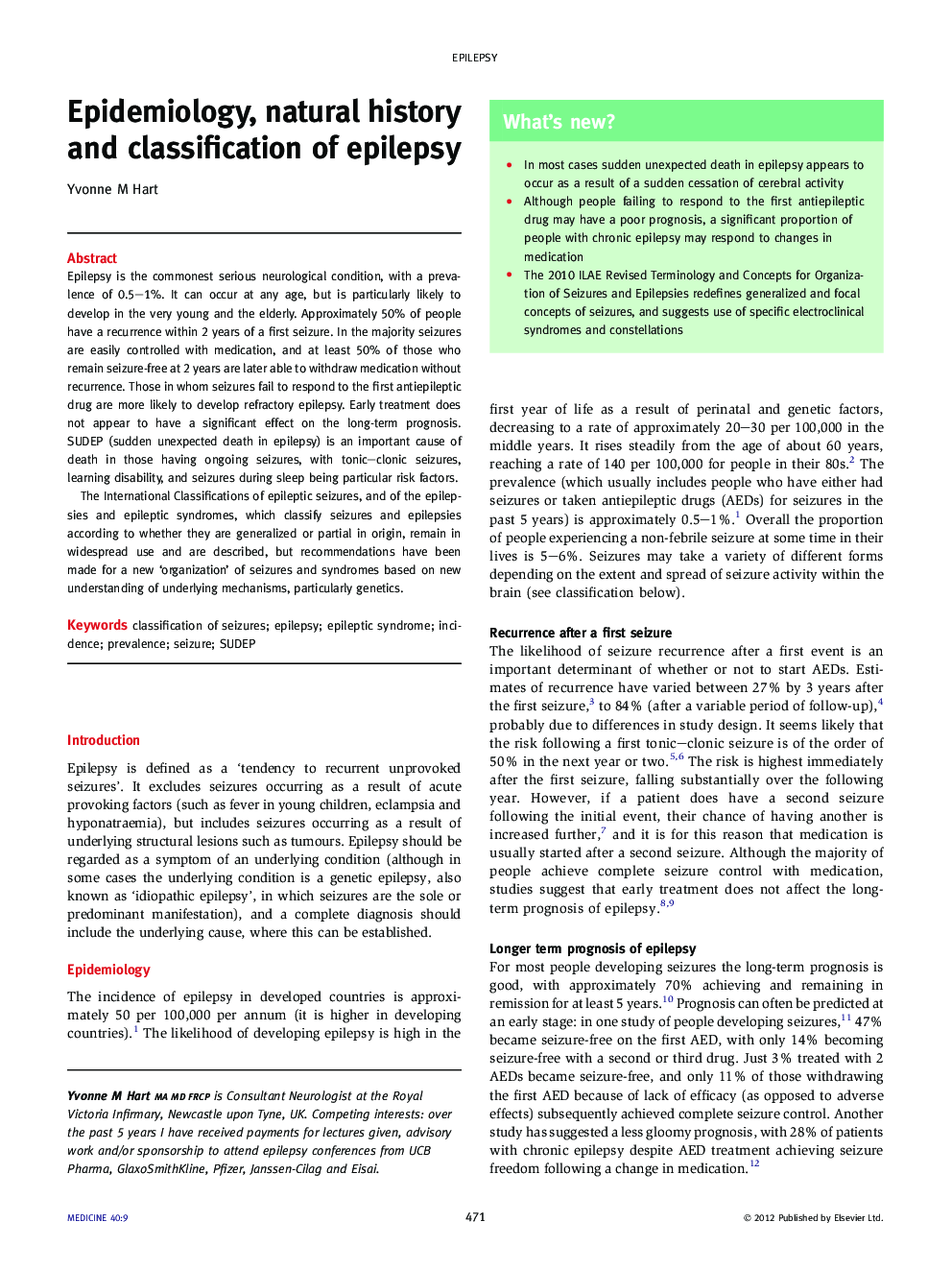| Article ID | Journal | Published Year | Pages | File Type |
|---|---|---|---|---|
| 3806795 | Medicine | 2012 | 6 Pages |
Epilepsy is the commonest serious neurological condition, with a prevalence of 0.5–1%. It can occur at any age, but is particularly likely to develop in the very young and the elderly. Approximately 50% of people have a recurrence within 2 years of a first seizure. In the majority seizures are easily controlled with medication, and at least 50% of those who remain seizure-free at 2 years are later able to withdraw medication without recurrence. Those in whom seizures fail to respond to the first antiepileptic drug are more likely to develop refractory epilepsy. Early treatment does not appear to have a significant effect on the long-term prognosis. SUDEP (sudden unexpected death in epilepsy) is an important cause of death in those having ongoing seizures, with tonic–clonic seizures, learning disability, and seizures during sleep being particular risk factors.The International Classifications of epileptic seizures, and of the epilepsies and epileptic syndromes, which classify seizures and epilepsies according to whether they are generalized or partial in origin, remain in widespread use and are described, but recommendations have been made for a new ‘organization’ of seizures and syndromes based on new understanding of underlying mechanisms, particularly genetics.
